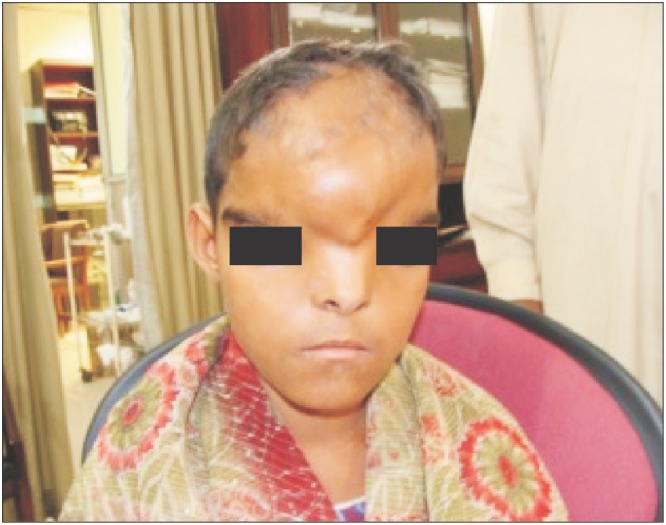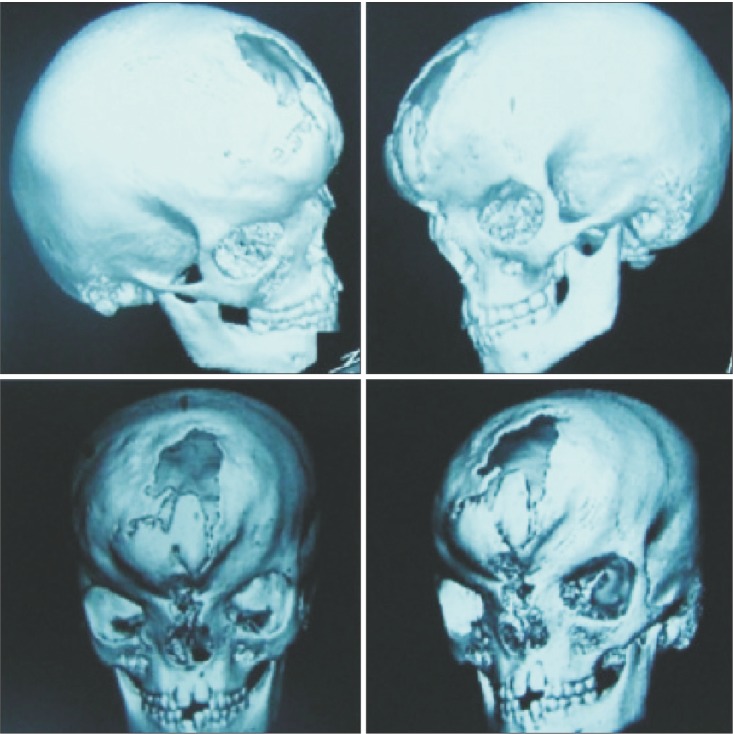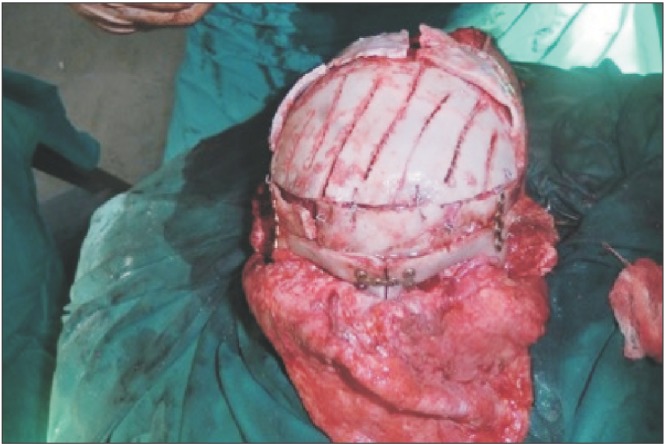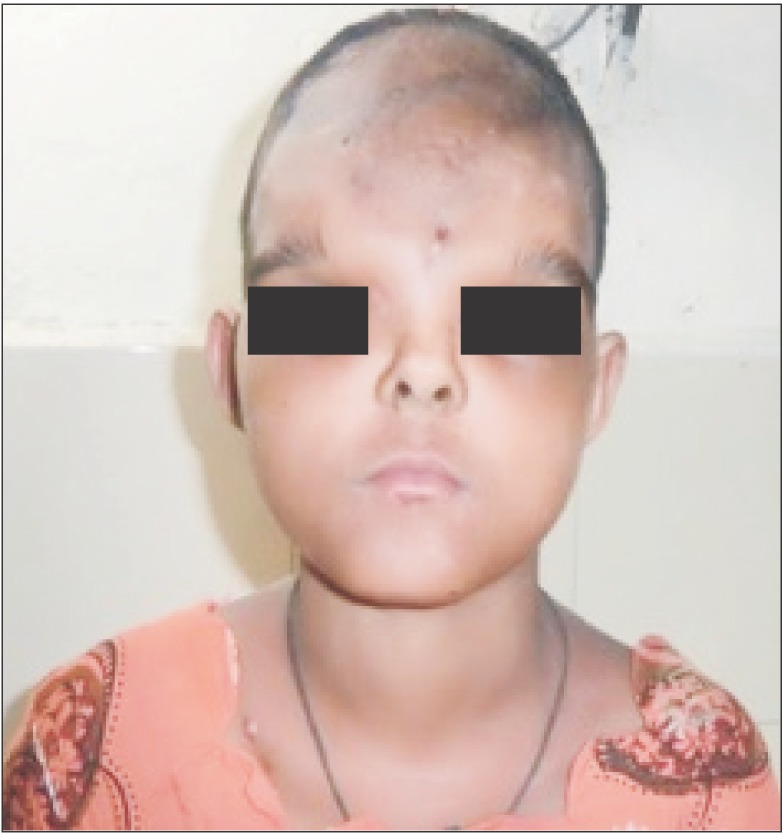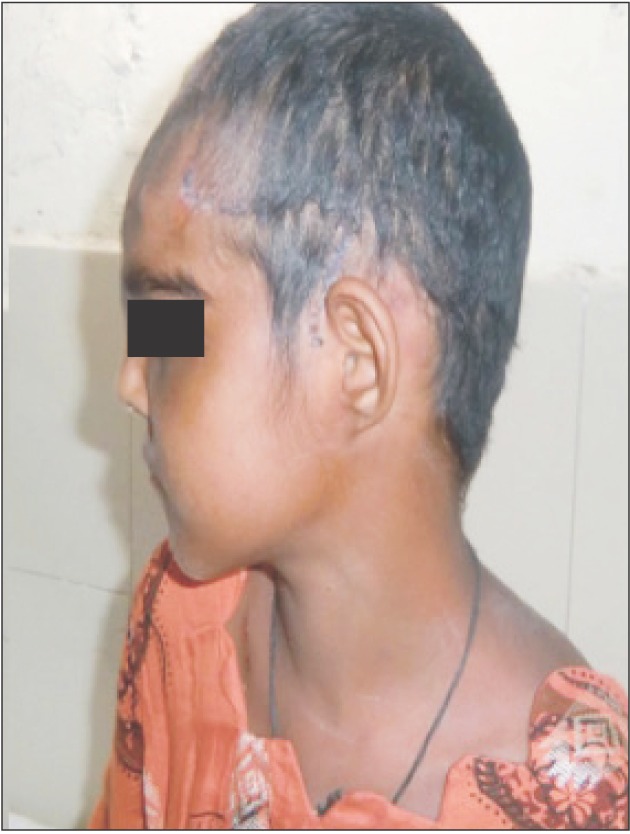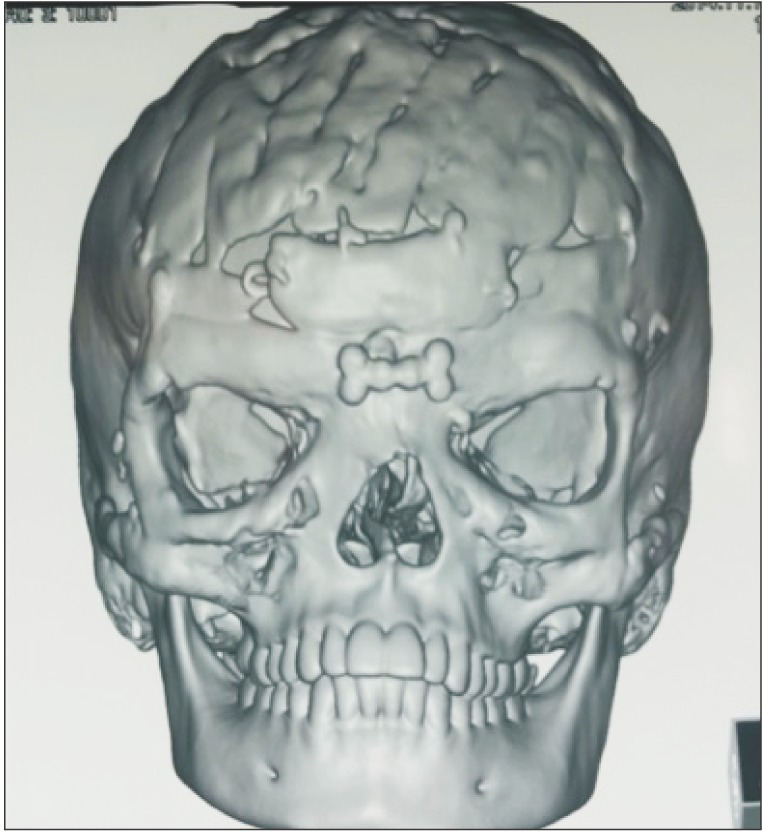J Korean Assoc Oral Maxillofac Surg.
2017 Dec;43(Suppl 1):S19-S24. 10.5125/jkaoms.2017.43.S1.S19.
Surgical correction of grade III hypertelorism
- Affiliations
-
- 1Army Burn Centre, Combined Military Hospital, Kharian, Pakistan.
- 2112 Military Dental Centre, Combined Military Hospital, Kharian, Pakistan. mumarqayyum@gmail.com
- 3PNS Shifa, Karachi, Pakistan.
- 4Department of Surgery, Fauji Foundation Hospital, Rawalpindi, Pakistan.
- 5Private Practice, Rawalpindi, Pakistan.
- KMID: 2399921
- DOI: http://doi.org/10.5125/jkaoms.2017.43.S1.S19
Abstract
- Orbital hypertelorism is an increased distance between the bony orbits and can be caused by frontonasal malformations, craniofacial clefts, frontoethmoidal encephaloceles, glial tumors or dermoid cysts of the root of the nose, and various syndromic or chromosomal disorders. We report a series of 7 cases of hypertelorism that were treated in our hospital. The underlying causes in our series were craniofacial clefts 0 to 14 (4 cases), craniofacial clefts 1 to 12 (1 case), and frontonasal encephalocele (2 cases), all congenital. Surgical techniques used to correct the deformity were box osteotomy and medial wall osteotomy with or without calvarial and rib grafts. A few of our cases were reoperations with specific challenges.
MeSH Terms
Figure
Reference
-
1. Vermeij-Keers C, Mazzola RF, Van der Meulen JC, Strickler M. Cerebro-craniofacial and craniofacial malformations: an embryological analysis. Cleft Palate J. 1983; 20:128–145. PMID: 6406099.2. Vermeij-Keers C, Poelmann RE, Smits-Van Prooije AE, Van der Meulen JC. Hypertelorism and the median cleft face syndrome. An embryological analysis. Ophthalmic Paediatr Genet. 1984; 4:97–105. PMID: 6545389.
Article3. Habal MB. Surgical correction of orbital hypertelorism: a surgical evolution through time. J Craniofac Surg. 2009; 20:715–717. PMID: 19461324.4. Edgerton MT, Udvarhelyi GB, Knox DL. The surgical correction of ocular hypertelorism. Ann Surg. 1970; 172:473–496. PMID: 4918004.
Article5. Lloyd LA. Craniofacial reconstruction: ocular management of orbital hypertelorism. Trans Am Ophthalmol Soc. 1975; 73:123–140. PMID: 1246801.6. AO Foundation. Diagnosis of hypertelorism [Internet]. Davos: AO Foundation;cited 2016 Oct 19. Available from: https://www2.aofoundation.org.7. Tessier P. Anatomical classification facial, cranio-facial and laterofacial clefts. J Maxillofac Surg. 1976; 4:69–92. PMID: 820824.8. Tessier P. Orbital hypertelorism I Successive surgical attempts Material and methods Causes and mechanisms. Scand J Plast Reconstr Surg. 1972; 6:135–155. PMID: 4652235.
Article9. Tan ST, Mulliken JB. Hypertelorism: nosologic analysis of 90 patients. Plast Reconstr Surg. 1997; 99:317–327. PMID: 9030136.
Article10. Tessier P, Guiot G, Rougerie J, Delbet JP, Pastoriza J. Cranionaso-orbito-facial osteotomies. Hypertelorism. Ann Chir Plast. 1967; 12:103–118. PMID: 5595910.11. Liu DL, Shan L, Yuan Q, Huang JJ. Refinement of the correction of orbital hypertelorism. J Craniofac Surg. 2011; 22:217–219. PMID: 21233750.
Article12. Morovic CG, Berwart F, Varas J. Craniofacial anomalies of the amniotic band syndrome in serial clinical cases. Plast Reconstr Surg. 2004; 113:1556–1562. PMID: 15114114.
Article13. Converse JM, Ransohoff J, Mathews ES, Smith B, Molenaar A. Ocular hypertelorism and pseudohypertelorism. Advances in surgical treatment. Plast Reconstr Surg. 1970; 45:1–13. PMID: 5409842.
Article14. Mühling J, Zöller J, Saffar M, Reinhart E, Reuther J. Results of operative therapy of bony orbit dystopies. Mund Kiefer Gesichtschir. 1998; 2(Suppl 1):S94–S97.15. Shen W, Cui J, Chen J, Ying ZX. Treatment of orbital hypertelorism using inverted U-shaped osteotomy. J Craniofac Surg. 2015; 26:415–417. PMID: 25699535.
Article16. Mahapatra AK, Tandon PN, Dhawan IK, Khazanchi RK. Anterior encephaloceles: a report of 30 cases. Childs Nerv Syst. 1994; 10:501–504. PMID: 7882371.
Article17. Mahapatra AK. Anterior encephaloceles. Indian J Pediatr. 1997; 64:699–704. PMID: 10771905.
Article18. Mahapatra AK, Suri A. Anterior encephaloceles: a study of 92 cases. Pediatr Neurosurg. 2002; 36:113–118. PMID: 11919444.
Article19. Mahatumarat C, Rojvachiranonda N, Taecholarn C. Frontoethmoidal encephalomeningocele: surgical correction by the Chula technique. Plast Reconstr Surg. 2003; 111:556–565. PMID: 12560676.
Article20. Mahatumarat C, Taecholarn C, Charoonsmith T. One-stage extracranial repair and reconstruction for frontoethmoidal encephalomeningocele: a new simple technique. J Craniofac Surg. 1991; 2:127–133. discussion 134. PMID: 1814492.21. Rojvachiranonda N, Mahatumarat C, Taecholarn C. Correction of the frontoethmoidal encephalomeningocele with minimal facial incision: modified Chula technique. J Craniofac Surg. 2006; 17:353–357. PMID: 16633187.22. Charoonsmith T, Suwanwela C. Frontoethmoidal encephalomeningocele with special reference to plastic reconstruction. Clin Plast Surg. 1974; 1:27–47. PMID: 4426155.
Article23. McCarthy JG, La Trenta GS, Breitbart AS, Zide BM, Cutting CB. Hypertelorism correction in the young child. Plast Reconstr Surg. 1990; 86:214–225. PMID: 2367571.
Article24. Engel M, Hoffmann J, Castrillon-Oberndorfer G, Freudlsperger C. The value of three-dimensional printing modelling for surgical correction of orbital hypertelorism. Oral Maxillofac Surg. 2015; 19:91–95. PMID: 25249178.
Article
- Full Text Links
- Actions
-
Cited
- CITED
-
- Close
- Share
- Similar articles
-
- A Case of Simultaneous Correction of Frontoethmoidal Meningoencephalocele and Hypertelorism
- Experience of Single Stage Treatment of Caniosynostosis, Hypertelorism, Exophthalmos Patient
- Case Report of Rib Bone Graft for Correction of Bifid Nose of Median Facial Cleft
- A Case of Median Cleft Face Syndrome
- The Principles of Surgical Treatment of Hypertelorism

